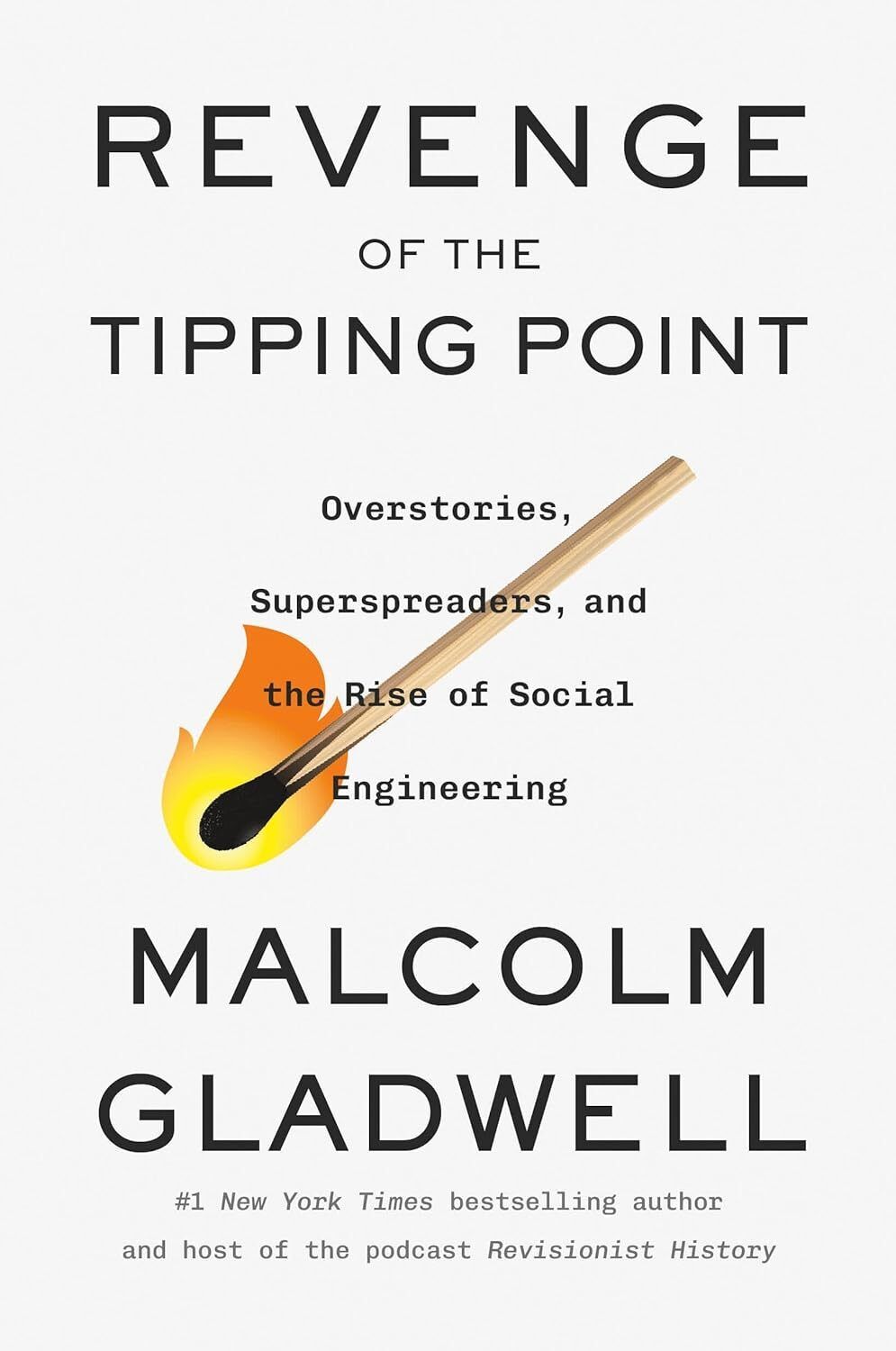
Is it me, or is it Malcolm? I’ve read almost every book Malcolm Gladwell has put out. I’ve enjoyed being led down the interesting path he always takes through stories that flesh out the hypothesis that is the reason for each of his books. His conversational writing style and ability to weave disparate narratives into a satisfying whole are hallmarks of his work. That second trait is not as much on display in this book, so perhaps that’s why this one left me with a shrug rather than a feeling of having been satisfyingly enlightened, as his prior books have. I’m leaning toward the notion that it’s not me, it’s Malcolm.
It might also be a sign of the times we are living in. These are serious times for both the US and the world. The world’s leading democracy is in crisis, daily ceding it’s leadership role in the world while, with oligarchy already at hand, seemingly descending further each day into autocracy. Gladwell’s conversational style and light touch “aha” moments seem out of sync with the times.

Author Malcolm Gladwell (Photo source: Author’s website https://www.gladwellbooks.com/landing-page/about-malcolm-gladwell/)
It’s hard to believe that it’s been twenty-five years since Gladwell’s first book, The Tipping Point, was published. The book was inspired by Gladwell’s fascination with the sudden drop in crime in New York City that occurred in the 1990s. It was a book-long discourse on what he calls social epidemics. The book included a chapter on crime and an exposition on the “broken windows” theory of policing (crack down hard on the little crimes and the bigger crimes will be reined in). “Broken windows”, accompanied by stop and frisk policing, were being put forward at the time to explain why New York’s crime rate, spiraling out of control for years, had suddenly dropped.
The Tipping Point looked at all kinds of phenomena from suicide rates to crime rates to how best sellers become best sellers, all through the lens of epidemiology. Was crime an epidemic? Did New York City’s approach — “stop and frisk” policing — act as an inoculant to the city’s epidemic of crime? Gladwell said yes.
The book was an instant best-seller and propelled Gladwell to years of celebrity and celebrity’s evil twin disdain. Some see him as a big-picture thinker capable of putting insights into relatable contexts and understandable language, opening these ideas up for the rest of us. Some see him as Captain Obvious. I’ve been more of the latter than the former.
In between that book and this latest one, Gladwell has gone on to pen a number of very successful nonfiction books. And the world at large has changed a lot. For one thing we’ve all lived through the COVID epidemic, and so we’ve become a little more knowledgeable about epidemiology than we might like.
For another thing, stop and frisk and the broken windows theory of policing have fallen out of favor, as studies have shown little correlation between those techniques and crime rates. It’s that point in particular that has caused people in the intervening years to question Gladwell’s whole approach in writing The Tipping Point.

The cover of the US edition of Malcolm Gladwell’s 2024 book. Cover design for this edition (and the Australian edition pictured in the top photo) are uncredited.
So, it’s not surprising that, when the 25th anniversary of the publication of The Tipping Point came around that Gladwell decided rather than issue a revised version, he would revisit the whole notion of social epidemics with a completely new book. Thus was born Revenge of the Tipping Point.
The big picture idea of this book is that, yes social epidemics do exist, and people who understand that are in a position to manipulate them. Frustratingly, he’s not talking about two of today’s hottest topics that would seem to fit into the overall idea of the book. He’s not talking about propaganda - the manipulation of the press to influence the spread of ideas. And social media — seemingly designed to spread social epidemics (they’re called “memes”) —doesn’t come up at all in this book.
He is talking about less obvious manipulations of human behavior. The book bounces from stories about TV show Will and Grace and its purported influence on the acceptance of gay marriage, to COVID — an actual epidemic — and how the spread of the COVID virus didn’t fit into easily understandable trajectories, to why Harvard has a women’s rugby team.
The stories are all interesting in and off themselves, and I do think I tore through this book at the same fast pace I’ve read his prior books. But do those stories add up to a cohesive whole that offers some fresh insight applicable to our times, as have his previous books? I have to say, at least for me, they did not.
RATING: Two and a Half Stars ⭐⭐🌠
RATING COMMENTS: If you are a fan of Gladwell’s this book is worth a read, otherwise it’s a pass. The stories here just don’t gel together into a satisfying whole — unlike his prior books this one left me with a shrug rather than the feeling of being satisfyingly enlightened.
WHERE I GOT MY COPY: I purchased a paperback copy at a local bookstore here in Brisbane Australia.
See What Others Think
Australian Financial Review: Malcolm Gladwell’s Tipping Point sequel oversimplifies the times
Title: Revenge of the Tipping Point: Overstories, Superspreaders and the Rise of Social Engineering
Author: Malcolm Gladwell
Publisher: Little, Brown and Company, an imprint of Hachette Book Group
Publish Date: October 1, 2024
ISBN-13: 9780316575805 (hard cover edition)
Publisher’s List Price: $32.00 — Price as of April 03
